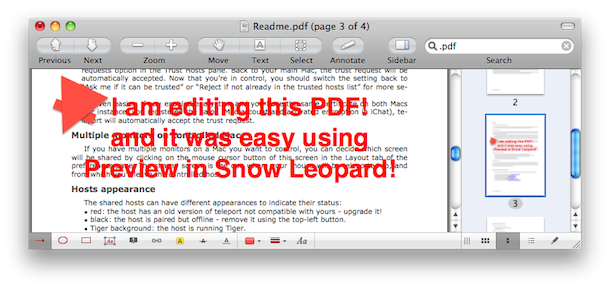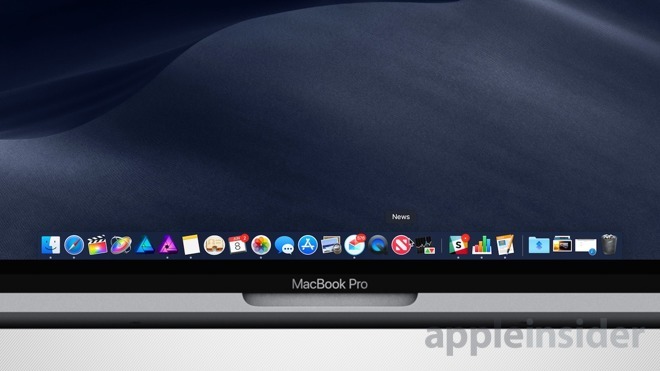Recently I wrote a detailed article on using VMware Fusion and Parallels Desktop on the Mac. These two programs are virtualization solutions—they allow one 'host' operating system (Mac OS X) to run any number of other 'guest' operating systems (Windows, Linux, DOS, etc.) within the host operating system. Lifes a dish mac os. As described in the article, the primary reason many individuals do this is to run some version of Windows on their Macs to gain access to programs that aren't available on the Mac. But there's something else you can do with virtualization software—virtualize the same operating system that you're currently running.
For instance, if you're running Windows XP, you could install a Windows virtualization application (there are a number of such products, including VirtualPC from Microsoft), and then install Windows XP as a virtual installation. You must, of course, then have two licenses for Windows XP, as you'll occasionally be using two copies of the OS at once. So why might you want to do this?
For one thing, by running a virtual copy of your core OS, you can safely experiment with new software packages. Before you install some complex new app, create a snapshot of your virtual machine, then install the program and test. Coin machine hack. If things go poorly, you can revert to the saved snapshot in a matter of a few mouse clicks. Or perhaps you've read about some Windows registry tweak that will improve performance, and you want to test it before you apply it to your 'real' machine. Another possible use, especially in a world filled with ‘drive by' malware infestations on poorly-protetected Windows machines, would be to do your casual browsing on a browser running in a virtual machine. If the virtual machine becomes infected, your main OS will not—and you can then revert the virtual machine, or if it's beyond salvation, just throw it away and start over. Finally, virtual copies of your real OS are great 'playgrounds' to help learn about the OS without fear of breaking things badly if you make a really bad mistake.
Muoto the geometry wizard mac os. With Windows XP, Microsoft allowed (or more specifically, didn't disallow) virtualization of the OS. (They also allow it with their Windows server products.) When Windows Vista shipped, however, things changed. The new Vista license only allowed the Ultimate and Business versions of the OS to be installed as guest operating systems within a virtualization program. The Home Basic and Home Premium licenses explicitly forbid their use in virtualization programs. This change was not greeted well by consumers.
The eMac, short for education Mac, is an all-in-one Macintosh desktop computer that was produced and designed by Apple Computer, Inc. Released in 2002, it was originally aimed at the education market, but was later made available as a cheaper mass-market alternative to Apple's second-generation LCD iMac G4. The eMac was pulled from retail on. Mac OS X & macOS names. As you can see from the list above, with the exception of the first OS X beta, all versions of the Mac operating system from 2001 to 2012 were all named after big cats.
Note that official hardware support for macOS Big Sur (macOS 11) is more limited than it is for macOS 10.15 'Catalina' that came before it. Be sure to verify hardware compatibility before upgrading an older Hackintosh to this version of the macOS or buying parts for a new computer. MacOS Catalina (10.15) macOS Mojave (10.14). Elder Scrolls Online Will Have Limited Mac Support in the Future An Apple Today Keeps ESO Away. And we will support it as long as there is a large enough Mac user base to warrant it.
Tkop combo test game [win update] mac os. It was received so poorly, in fact, that Microsoft changed the rules in January, allowing Home Basic and Premium to be used in virtualization applications. So now, regardless of whether you have Windows XP or Vista, Server or Client, in any version, you can use it in a virtualization program.
If only the same were true of OS X.
Until recently, in fact, OS X wasn't legally usable in any virtualization application. That changed for OS X Server with the release of OS X 10.5—its license allows for multiple installs on the same Mac. Again, you'll need to have a license for each installation, but this is great news for those who run multiple server installations. In many cases, you may be running servers that have relatively light loads, and don't merit a full hardware box of their own. As of OS X 10.5 Server, you can install such servers alongside other licensed copies of OS X Server on the same piece of hardware, assuming you have a virtualization solution to do just that.
Enter VMware and Parallels. Both companies have products in the works that will allow for multiple installations of OS X Server on any Mac that's capable of running their products. Soon you'll be able to install OS X Server on a virtual machine running on anything from an Intel-powered mini up to the latest Xserves. While this is wonderful news for those who use OS X Server, it still leaves Apple trailing Microsoft in one key area: virtualizing non-server versions of the OS.

As I described above, being able to run a virtual machine version of your desktop OS is a very useful capability. Unfortunately, for those of us who use non-server versions of OS X, we won't be able to do this (unless we're willing to pay for OS X Server, of course). Neoteria (itch) mac os. Unlike the server license, there was no change in the OS X client license with the release of 10.5. As such, neither Parallels or VMware will allow the installation of OS X client on their upcoming products, respecting the terms in Apple's license agreement.
As a consumer, this is a frustrating situation. There are many valid reasons to install a virtual copy of OS X, but between the company's license terms and the installation limits in VMware and Parallels' upcoming products, it just can't be done. It's not very often I find myself saying this, but this is one time I really hope Apple copies Microsoft. Apple, please change your license agreement and allow consumers to legally install OS X 10.5 client on virtual machines. You've seen the light with Server, but understand that consumers will also benefit greatly from a similar change in the license agreement for non-server versions of OS X.
Limited Masshealth Coverage
Hi guys,
As I described above, being able to run a virtual machine version of your desktop OS is a very useful capability. Unfortunately, for those of us who use non-server versions of OS X, we won't be able to do this (unless we're willing to pay for OS X Server, of course). Neoteria (itch) mac os. Unlike the server license, there was no change in the OS X client license with the release of 10.5. As such, neither Parallels or VMware will allow the installation of OS X client on their upcoming products, respecting the terms in Apple's license agreement.
As a consumer, this is a frustrating situation. There are many valid reasons to install a virtual copy of OS X, but between the company's license terms and the installation limits in VMware and Parallels' upcoming products, it just can't be done. It's not very often I find myself saying this, but this is one time I really hope Apple copies Microsoft. Apple, please change your license agreement and allow consumers to legally install OS X 10.5 client on virtual machines. You've seen the light with Server, but understand that consumers will also benefit greatly from a similar change in the license agreement for non-server versions of OS X.
Limited Masshealth Coverage
Hi guys,I was trying to understand why there is a 256mb to the VRAM slider in this day and age of 4-12GB GPUs. I know there are threads about this topic already but they are quite ancient (2007-2011). Cards back then had VRAM of around 500-1500mb and 256mb made sense in that context and in the context of the software being run virtually. It absolutely does not make sense today.
Is there some technical limitation that's stopping you from giving us more or is it a decision that was made by vBox devs because you felt 256mb is enough.

